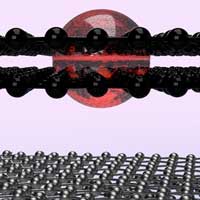 New research describes a technique that weakens the repulsive force between electrons in 'magic-angle' graphene superconductors, providing physicists with exciting new details about this strange state of matter.
New research describes a technique that weakens the repulsive force between electrons in 'magic-angle' graphene superconductors, providing physicists with exciting new details about this strange state of matter.
Thursday, March 18, 2021
Research finds surprising electron interaction in 'magic-angle' graphene
 New research describes a technique that weakens the repulsive force between electrons in 'magic-angle' graphene superconductors, providing physicists with exciting new details about this strange state of matter.
New research describes a technique that weakens the repulsive force between electrons in 'magic-angle' graphene superconductors, providing physicists with exciting new details about this strange state of matter.
Researchers help keep pace with Moore's Law by exploring a new material class
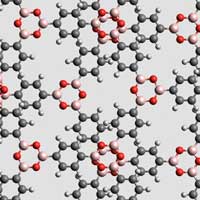 Researchers create a new polymer-based electrical insulation for circuits that could help put more power in smaller spaces.
Researchers create a new polymer-based electrical insulation for circuits that could help put more power in smaller spaces.
New perovskite fabrication method for solar cells paves way to large-scale production
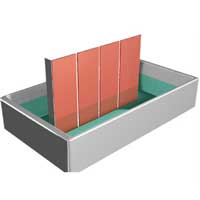 A new, simpler solution process for fabricating stable perovskite solar cells overcomes the key bottleneck to large-scale production and commercialization of this promising renewable-energy technology, which has remained tantalizingly out of reach for more than a decade.
A new, simpler solution process for fabricating stable perovskite solar cells overcomes the key bottleneck to large-scale production and commercialization of this promising renewable-energy technology, which has remained tantalizingly out of reach for more than a decade.
Light it up - using plasmonic metasurfaces in nanophotonics
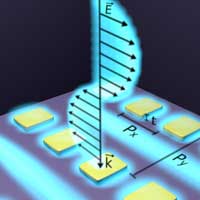 Researchers have debunked the decade-old myth of metals being useless in photonics, with their findings expected to lead to many applications in the field of nanophotonics.
Researchers have debunked the decade-old myth of metals being useless in photonics, with their findings expected to lead to many applications in the field of nanophotonics.
Artificial neuron device could shrink energy use and size of neural network hardware
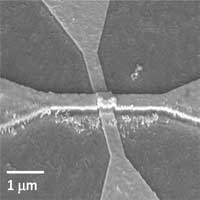 Training neural networks to perform tasks, such as recognizing images or navigating self-driving cars, could one day require less computing power and hardware thanks to a new artificial neuron device. The device can run neural network computations using 100 to 1000 times less energy and area than existing CMOS-based hardware.
Training neural networks to perform tasks, such as recognizing images or navigating self-driving cars, could one day require less computing power and hardware thanks to a new artificial neuron device. The device can run neural network computations using 100 to 1000 times less energy and area than existing CMOS-based hardware.
Self-assembly of 2D nonclose-packed binary gold nanoparticle arrays with tunable optical properties
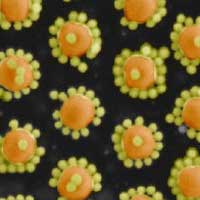 A binary nanoparticle array refers to a periodic structure comprising at least two types of building nanoparticles with component or morphological dissimilarities. Synthetic binary arrays can not only boost structural diversity, but also new optical or thermoelectronic properties synergized from different components.
A binary nanoparticle array refers to a periodic structure comprising at least two types of building nanoparticles with component or morphological dissimilarities. Synthetic binary arrays can not only boost structural diversity, but also new optical or thermoelectronic properties synergized from different components.
Scientists propose to use nanodiamonds in cancer treatment
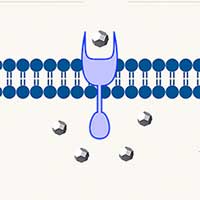 Scientists have recently investigated that carboxylated nanodiamonds could promote the adhesion of tumor cells to the underlying substrate, and motility of tumor cells are therefore limited.
Scientists have recently investigated that carboxylated nanodiamonds could promote the adhesion of tumor cells to the underlying substrate, and motility of tumor cells are therefore limited.
Plasmonic gold nanogaps make light shine ever brighter
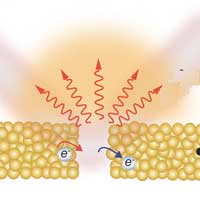 Physicists came across a phenomenon that boosts the light from a nanoscale device more than 1,000 times greater than they anticipated.
Physicists came across a phenomenon that boosts the light from a nanoscale device more than 1,000 times greater than they anticipated.
A triboelectric nanogenerator for efficient ocean wave energy harvesting
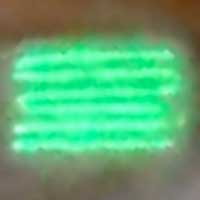 Researchers have developed a water-tube-based TENG for irregular and low-frequency environmental energy harvesting, such as water waves.
Researchers have developed a water-tube-based TENG for irregular and low-frequency environmental energy harvesting, such as water waves.
Mystery of the nanobubbles solved
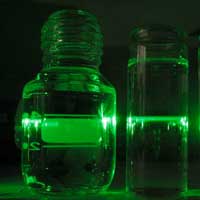 The observed lifetime of suspended nanobubbles is up to several weeks. However, according to the classical theory of bubble stability, a nanosized bubble should dissolve within microseconds. This controversy between experiments and theory is known as the nanobubble paradox.
The observed lifetime of suspended nanobubbles is up to several weeks. However, according to the classical theory of bubble stability, a nanosized bubble should dissolve within microseconds. This controversy between experiments and theory is known as the nanobubble paradox.
Extremely conductive graphene hydrogel for medical applications
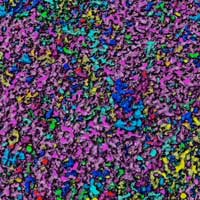 Researchers have developed a method to produce hydrogels with an excellent level of electrical conductivity. What makes this method special is that the mechanical properties of the hydrogels are largely retained.
Researchers have developed a method to produce hydrogels with an excellent level of electrical conductivity. What makes this method special is that the mechanical properties of the hydrogels are largely retained.
Foiling burglars and safecrackers with invisible keyholes (w/video)
 Hard times for burglars and safecrackers: Researchers have developed an invisible 'keyhole' made of printed, transparent electronics. Only authorized persons know where to enter the access code.
Hard times for burglars and safecrackers: Researchers have developed an invisible 'keyhole' made of printed, transparent electronics. Only authorized persons know where to enter the access code.
Size matters when it comes to atomic properties
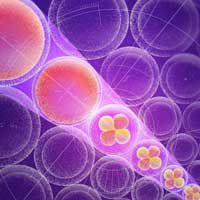 A recent study has yielded new answers to fundamental questions about the relationship between the size of an atom and its other properties, such as electronegativity and energy. The results pave the way for advances in future material development.
A recent study has yielded new answers to fundamental questions about the relationship between the size of an atom and its other properties, such as electronegativity and energy. The results pave the way for advances in future material development.
Subscribe to:
Comments (Atom)
